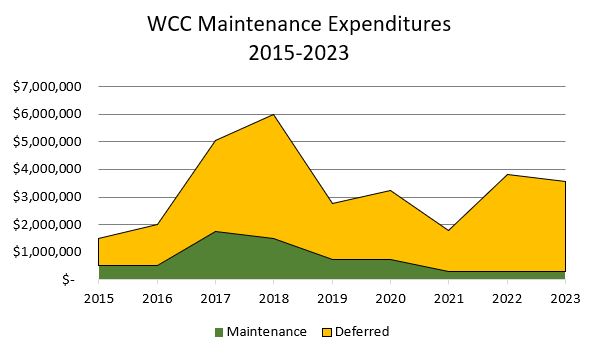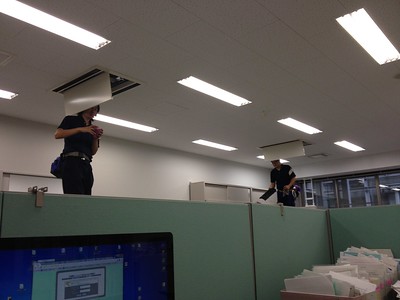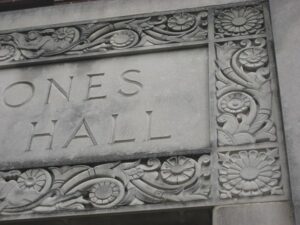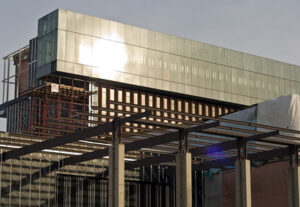Recently, I read an article about the cost of neglected maintenance at Louisiana State University. LSU is wrestling with nearly $637M in maintenance liabilities due to neglect. The university has more than 15M square feet of space, so the maintenance debt there is about $42.50 per square foot.
There’s another way to look at the school’s maintenance debt. LSU has about 35,000 students. That’s about $18,200 in neglected maintenance per student. The reason it’s valuable to compare the maintenance bill per student is to illustrate the extent of the problem. It’s not possible to push the cost of undone maintenance off on students, because the cost is simply overwhelming.
Further, it helps to illustrate how unsustainable maintenance neglect really is. The school can never raise tuition high enough or often enough to get ahead of this liability. And neglected maintenance is, in fact, a liability.
The sewage spills at WCC underscore the liability involved in not performing maintenance. Not only does it include the cost of repairing and replacing the infrastructure, but it also must include the possibility of fines incurred for uncontrolled sewage overflows. For example, in 2020, the State of Michigan fined the City of Ann Arbor $45,000 due to repeated sanitary sewage overflows.
Neglected maintenance is a debt that an institution simply cannot get out from under. In LSU’s case, the university is hoping that the state legislature will provide funding to pay for its maintenance backlog. In Michigan, that’s just not realistic. The State has already made it very clear to public universities and colleges that there will be no funding for maintenance an institution has chosen not to perform.
Maintenance expenditures climb when neglect is involved
I looked at WCC’s budget information from 2015 to present. At no time during the nine fiscal years I looked at did WCC spend more on ordinary maintenance than it did on neglect remediation. That’s because putting off maintenance vastly increases the cost of the work when the institution finally performs it.
The graph below shows WCC’s maintenance and deferred maintenance expenditures from 2015-2023. In the last three years, the Campus Maintenance and Repair budget has been held at $300,000, while the Deferred Maintenance expenditures have climbed. Currently, WCC spends more than 10 times more on neglected maintenance than on ordinary maintenance. It’s really simple; when you don’t perform maintenance on time, you create incredibly expensive deferred maintenance. It’s a waste of taxpayer dollars, and it draws resources away from the college’s mission of providing high-quality, low-cost education.

There is a high and unavoidable premium associated with choosing not to perform timely maintenance. That’s exactly why the State of Michigan will not pay for it. It’s also why the WCC Trustees should require the administration to allocate industry-standard funding to ordinary maintenance on campus. The Trustees can pour all the money they have on undone maintenance and it won’t get WCC any closer to eliminating its maintenance debt. The only way to eliminate “deferred maintenance” is to avoid creating it in the first place.
The WCC Trustees must insist that the administration immediately and perpetually provide a realistic annual maintenance budget based on industry standard maintenance expenditures. Further, the Board should phase out its annual authorization for “deferred maintenance.” Instead, the Trustees should insist that the Administration perform all maintenance on time and as needed.
The public owns and funds the WCC campus. The taxpayers and the trustees they elected should not tolerate the willful neglect of this massive public investment.
Photo Credit: Yuya Tamai , via Flickr


























